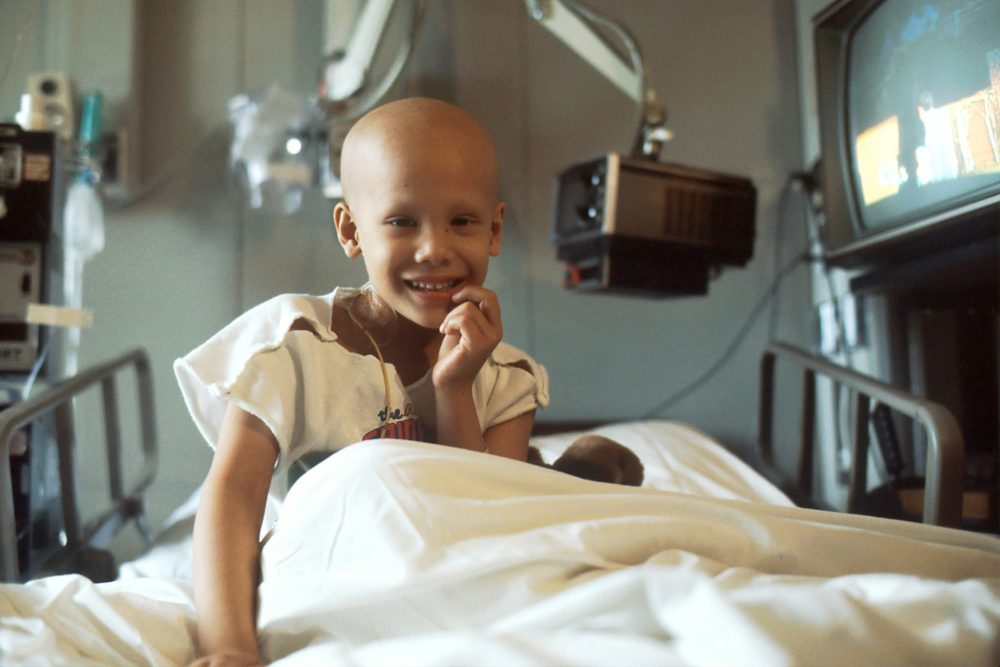Biotech
Suicide Gene Therapy Offers Hope Against Ewing Sarcoma
Spanish researchers at ISCIII and CIBER have developed a gene therapy using “suicide genes” to target Ewing sarcoma, a rare childhood cancer. By introducing HSV-TK via adenovirus and activating it with ganciclovir, tumor cells self-destruct while sparing healthy tissue. Preclinical models showed tumor shrinkage, immune response activation, and potential curative effects, paving paths to clinical trials.

A team from the Carlos III Health Institute (ISCIII) and CIBER has demonstrated in preclinical models that it is possible to destroy Ewing sarcoma tumor cells using an innovative strategy based on the introduction of “suicide genes.” The discovery, published in the journal Scientific Reports , opens the door to new therapies for this rare childhood cancer with a poor prognosis when it relapses or metastasizes.
Ewing ‘s sarcoma is a malignant tumor that primarily affects children and adolescents, with approximately 25 new diagnoses annually in Spain. Despite the progress made in recent decades, therapeutic options remain limited : chemotherapy and radiotherapy, treatments that have not shown significant improvements for years. Currently, survival rates are around 70%, but they drop dramatically in patients with metastatic or recurrent disease.
Faced with this situation, researchers at the Rare Diseases Research Institute (IIER-ISCIII), under the direction of Javier Alonso, have developed a gene therapy system specifically targeting the tumor cells of this sarcoma . The key lies in a gene derived from the herpes simplex virus called thymidine kinase (HSV-TK), whose expression triggers cell death when combined with the antiviral drug ganciclovir.
Suicide genes: precision against tumors
“Suicide genes” are so named because when activated, they cause the self-destruction of the cells that express them. In this case, the ISCIII team used an adenovirus—a common tool in gene therapy—to introduce the HSV-TK gene into the tumor cells. The design ensures that the gene is only activated in Ewing sarcoma cells, thanks to a GGAA promoter specific to this tumor type, which confers great specificity and reduces the risk of damaging healthy cells.
When infected cells express HSV-TK and are administered ganciclovir , this compound is transformed into a toxic molecule that selectively eliminates cancer cells. The study abstract details that “HSV-TK expression in Ewing sarcoma cells under the control of the GGAA promoter resulted in cell death in the presence of ganciclovir both in vitro and in vivo . Interestingly, in vitro studies revealed a strong bystander effect.” This effect refers to the ability of treated cells to induce the death of neighboring unmodified cells, which enhances antitumor efficacy.
In preclinical xenograft tumor models, treatment dramatically reduced tumor volume following valganciclovir administration . “When adenoviral vectors were used as therapies suitable for clinical translation, expression of HSV-TK in Ewing sarcoma cells reduced cell viability in vitro and tumor growth in vivo . Interestingly, Ewing sarcoma cell death was accompanied by massive infiltration of residual tumor by immune cells,” the article notes.
This latter finding is particularly relevant, as it suggests that the therapy not only directly kills cancer cells, but also triggers an immune response that may contribute to tumor elimination.
From tumor control to complete elimination of the Ewing sarcoma
Javier Alonso’s group had previously used this specific control strategy using GGAA promoters to target CRISPR/Cas9 technology against Ewing’s sarcoma. In that study, they managed to slow tumor growth, but not eliminate it. This new approach, however, goes a step further: in some models, tumor size was reduced to the point of complete disappearance , making it a potentially curative strategy.
The lead researcher emphasizes the importance of these results: “There has been no significant progress in treatments for this devastating childhood cancer over the past 20 years. It is therefore absolutely essential to explore new treatment avenues that are different from conventional treatments, which we know have already reached their limits. The therapy we have developed has proven to be highly specific and highly effective in preclinical studies, so we believe this therapy could be tested in a first clinical trial in patients in a relatively short period of time, if we have adequate funding.”
Although the results are promising, the most complex step remains: moving the therapy into clinical trials with patients. To achieve this, it will be essential to secure funding and guarantee the long-term safety of the treatment. The fact that adenoviral vectors and a suicide gene already studied in other clinical contexts are being used provides a framework of confidence for its potential application.
The study also highlights the collaboration between basic science, applied research, and patient associations. Funding came from the ISCIII itself through calls for Health Technology Development and Health R&D Projects, in addition to support from organizations linked to families affected by childhood cancer, such as the Pablo Ugarte Association, the Candela Riera Association, the Todos Somos Iván Association, the Álex Smile Foundation, and the FEDER Foundation.
Towards disruptive therapies in pediatric oncology
This breakthrough is part of the IIER-ISCIII’s line of research focused on developing disruptive therapies for rare diseases and childhood tumors. The combination of gene editing tools, tumor-specific promoters, and therapeutic viral vectors is creating a new paradigm in the fight against childhood cancer.
The authors conclude in the article that “our results demonstrate that suicide genes can be specifically delivered to Ewing sarcoma cells by combining Ewing sarcoma-specific GGAA promoters with adenoviral vectors, paving the way for the development of cancer gene therapies based on the selective expression of genes with therapeutic potential.”
With this step forward, Spanish research strengthens its position at the forefront of pediatric oncology. If upcoming clinical trials confirm the preclinical results, the use of “suicide genes” could become a real therapeutic alternative for children and adolescents with Ewing sarcoma, offering renewed hope where current treatments are insufficient.
__
(Featured image by National Cancer Institute via Unsplash)
DISCLAIMER: This article was written by a third party contributor and does not reflect the opinion of Born2Invest, its management, staff or its associates. Please review our disclaimer for more information.
This article may include forward-looking statements. These forward-looking statements generally are identified by the words “believe,” “project,” “estimate,” “become,” “plan,” “will,” and similar expressions. These forward-looking statements involve known and unknown risks as well as uncertainties, including those discussed in the following cautionary statements and elsewhere in this article and on this site. Although the Company may believe that its expectations are based on reasonable assumptions, the actual results that the Company may achieve may differ materially from any forward-looking statements, which reflect the opinions of the management of the Company only as of the date hereof. Additionally, please make sure to read these important disclosures.
First published in GACETA MEDICA. A third-party contributor translated and adapted the article from the original. In case of discrepancy, the original will prevail.
Although we made reasonable efforts to provide accurate translations, some parts may be incorrect. Born2Invest assumes no responsibility for errors, omissions or ambiguities in the translations provided on this website. Any person or entity relying on translated content does so at their own risk. Born2Invest is not responsible for losses caused by such reliance on the accuracy or reliability of translated information. If you wish to report an error or inaccuracy in the translation, we encourage you to contact us.

-

 Crypto2 days ago
Crypto2 days agoRipple Rules Out IPO, Keeps XRP and RLUSD at the Center of Its Strategy
-

 Biotech1 week ago
Biotech1 week agoMedical Research in 2025: A Turning Point for Precision and Personalized Medicine
-

 Fintech4 days ago
Fintech4 days agoOneConnect Stock: High Risk, Fading Confidence, and a Slim Turnaround Hope
-

 Business2 days ago
Business2 days agoTopRanked.io Weekly Affiliate Digest: What’s Hot in Affiliate Marketing [Sports Betting + TikTok + World Cup]













